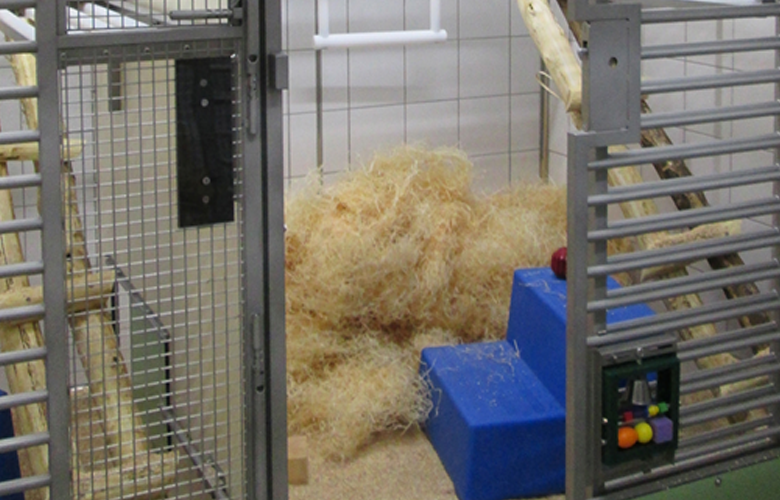Blood collection techniques (DART, NHP)
Global Capacity and Expertise to Take on Any DART or NHP-DART Study
As the industry recognized leader in developmental and reproductive toxicology (DART and NHP-DART) we have extensive specialized experience across various animal models and species. We’ve completed more than 120 NHP-DART studies in pregnant models and performed more than 25 ePPND/PPND studies. In addition, we conduct more than 70 DART studies each year in small models.
When it comes to capacity — our Greenfield (USA) and Harrogate (Europe) GLP sites offer spacious modern facilities for a variety of DART studies. Our Münster (Europe) and Madison (USA) GLP sites boast DART and Nonhuman Primate (NHP) DART capabilities in various housing configurations, including social housing and our novel 3-Pillar approach to NHP studies in European-compliant housing. In fact, social housing is a minimum standard for NHP DART studies.
Our global senior staff, under the leadership of world-renowned DART scientist, Dr. Gerhard Weinbauer, includes more than 10 dedicated DART study directors with deep experience in DART, NHP-DART and General Toxicology, many of them with Ph.D.s. or advanced degrees.
Get Your NHP DART Studies Started With Fewer Delays
NHP DART studies are some of the most challenging given the inherent conception risks. We offer advancements in NHP DART studies, such as EU-compliant housing and our novel 3-Pillar approach, which has resulted in higher than average conception rates and lower than average pre- and post-natal losses. These advancements translate into less overall risk, better adherence to your timelines and an overall higher ROI for you.
The Latest Technology and Techniques — Deliver Welfare and Enrichment
We know that every detail matters for your study. That’s why we’re dedicated to pioneering advances in animal welfare and enrichment to benefit your DART and/or NHP DART program. We start by offering a variety of fit-for-purpose housing — from solid-bottom caging, to social housing and EU-compliant configurations — our options enable model comfort and enrichment, translating into sensitive data collection for precise insights about the impact of your novel compound.
In addition, we are pioneers in advancing NHP DART studies through a unique “Three-Pillar Approach” that was developed and refined at our Münster, Germany (Europe) and offered at both our Münster and Madison NHP Centers of Excellence. Our “Three-Pillar Approach” provides an enhanced housing design that exceeds EU guidelines for minimum cage dimensions, a rigorous training program for both animals and staff, and systematic cage mate selection that is based on model behavior, for improved social pairing.
To address special study requirements, we have also pioneered the use of other cutting edge innovations and techniques. The following are just a few examples. Imaging with un-sedated use of ultrasound can help eliminate the potential effects of anesthesia in your study results. Continuous infusion can help meet your specialized delivery requirements — even in the smallest rodents. Quantitative behavior monitoring with any maze or EthoVision technologies, can help you assess neurobehavioral endpoints, even with free moving models.
Further, the study segments can be performed separately or as a single study in any combination — depending on your specific needs. As your partner, we consult with you on fit-for-purpose study design to keep your DART or NHP DART program on track.
A Partner for the Long Road Ahead
DART can be a long, complex and expensive part of your drug development journey. You need a partner with specialized reproductive and developmental toxicology experience to design and perform your studies effectively; innovative techniques and the capacity to enable you to meet your timelines efficiently; and regulatory know-how to navigate the guidelines and ensure you meet all requirements compliantly


